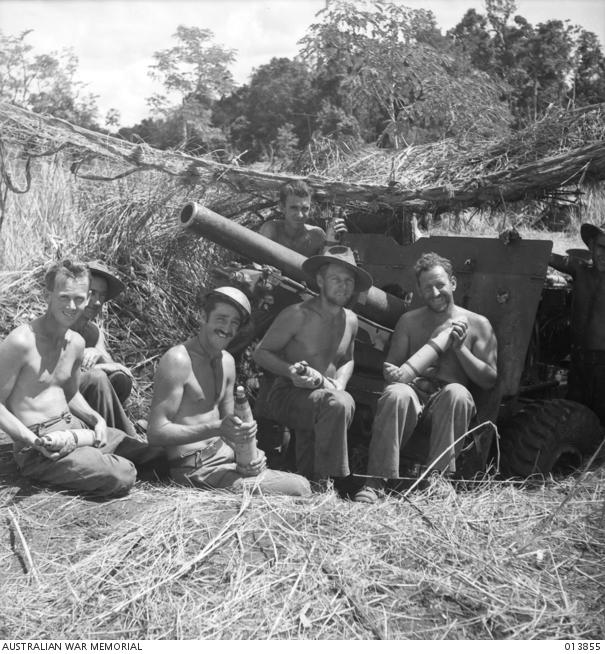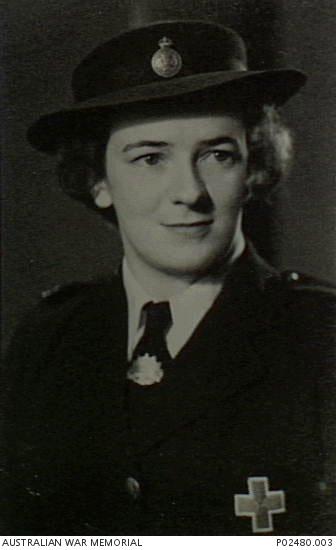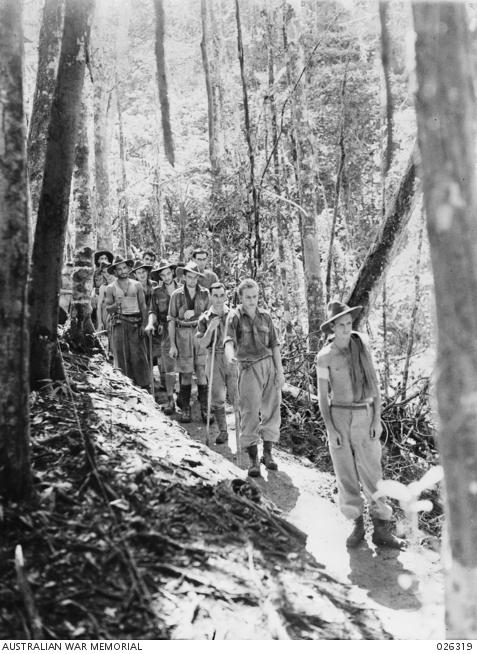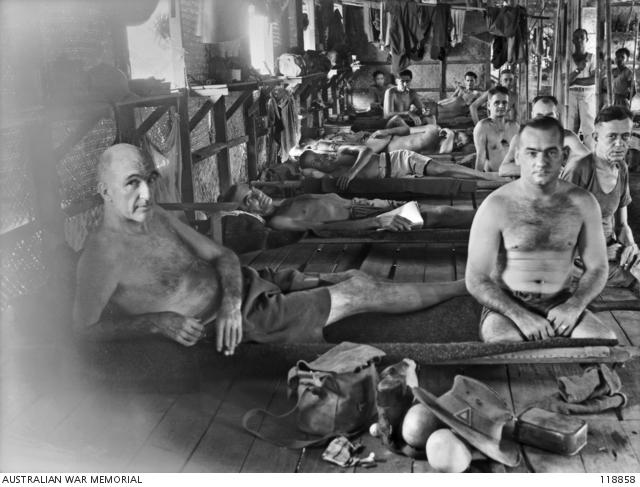The voices of Anzac Day 2018
Anzac Day commemorations have been held since 1916, and the Australian War Memorial in Canberra continues this tradition. Today, Anzac Day goes beyond the anniversary of the landing on Gallipoli. It is the day on which we remember all Australians who served and died in war and on operational service past and present.
The 2018 Anzac Day National Ceremony incorporated a short film projected featuring the voices of four Second World War veterans, accompanied by film footage shot during the war.
Alexander “Alex” Bell, formerly a lieutenant with the 55/53rd Battalion, was interviewed in 1989. He described his life experiences including early childhood, joining the military cadets, and providing training to soldiers at Greta Army Camp. He was not mobilised and deployed till 1942, when he went to Papua New Guinea, where he encountered the entrenched strength of the Japanese forces on the Sanandanda track and experienced the loss of friends. He and those who survived sustained an enduring love for their comrades: “I think we all started to realise … that, whatever would happen, that you could depend on your mate to stick with you. Even the request, ‘Leave me, get out!’ would be an empty remark; he would stay, and get you out, or stay with you”. Alex was so moved by his memories of the kindness of his mates that he nearly breaks down in recollection. His full interview can be heard here.

55/53rd infantry battalion crew of 25 pounder unit near the muzzle of their gun, 16th December, 1942. Photograph by George Silk. https://www.awm.gov.au/collection/C33258 .
Alice Penman (née Burns) had uncles she’d never known – her mother’s brothers – who were killed during the First World War. As the Second World War began, her mother still mourned them, but Alice saw an opportunity to become involved in nursing, something she’d always wanted to do. In 1942, she sailed to the Middle East to work with Australia’s Voluntary Aid Detachment (VAD), working for months alongside nurses in the 2/1st Australian General field hospital at Gaza Ridge in Palestine. Tending wounded Australians, she formed fond and lasting memories, particularly of larrikins who would downplay the seriousness of their physical wounds. She admired their humour, strengths, and willingness to help around the hospital, as well as the concerns she held for their future happiness and health. She was able to recall many fascinating details of life and conditions in a field hospital, and said that she was “exceedingly proud to be part of the 2/6th Australian General Hospital [and] exceedingly proud to have served the men.” Alice’s interview can be heard here.

Studio portrait of Alice Burns, Voluntary Aid Detachment (VAD), October 1941.
https://www.awm.gov.au/collection/C325902
John Lewis Prichard Sim enlisted in Ballarat in 1942 and was sent to Papua New Guinea with the 39th Battalion. Having enlisted at the age of 26, he was considered “an old bugger” by his younger unit members, who he thought of affectionately as “babies ... who should not have been at war”. John had been told that Japanese soldiers would not be good fighters, which proved to be wrong. He’d also heard that the Kokoda Track was impassable, this too proved to be wrong. The exhaustion afflicted by John and his mates was so severe that if one were to collapse along the way, his friends could hardly help him up again; a source of guilt for John many years later. His love for his comrades and for his country never wavered, as he details in his interview.

Wounded members of the 39th Infantry Battalion making their way along a jungle trail to the base hospital, a journey of six days by foot. All are suffering gunshot wounds sustained in fighting against Japanese forces in the Kokoda area.
https://www.awm.gov.au/collection/C9967
Robert Jelley was a bombardier with the 4th Anti-Tank Unit when he was captured by Japanese forces and made to work on the Thai-Burma Railway as a prisoner of war. His recollections of the experience are in turns humorous – such as his anecdote about stealing pumpkins – and horrifying – as he describes surgeries done without anaesthetic. He remembers the ingenuity of doctors in the prison camps – who would make-do with hand-made tools, and distilled quinine from forest plants without a laboratory to treat malaria patients – with admiration and respect. Robert wrote several poems describing his experiences, and expressing his hopes and fears. This verse describes a funeral at one of the railway camps in Burma:
A tattered flag draped all his tired remains.
A hymn is sung, a prayer is said.
The last post sounds in the jungle glade,
We stand and salute our glorious dead.

Chronically ill patients whose health broke down in the Burma and Thailand jungle during the construction of the railway, in Ward 19 of Nakom Paton Hospital (September 1945). Photograph by Norman Stuckey.
https://www.awm.gov.au/collection/C202559
Film footage used
F01037 Embarkation on Queen Mary https://www.awm.gov.au/collection/C188669
F01055 Nurses on Queen Mary https://www.awm.gov.au/collection/C188682
F01100 Advance into Syria https://www.awm.gov.au/collection/C188724
F01212 Kokoda (unedited) https://www.awm.gov.au/collection/C188817
F01273 Repatriated Australians from Germany, in England https://www.awm.gov.au/collection/C188869
F01748 El Alamein 1943 https://www.awm.gov.au/collection/C189091
F01866 Assault at Salamaua https://www.awm.gov.au/collection/C189198
F02153 Arrival Melbourne https://www.awm.gov.au/collection/C189397